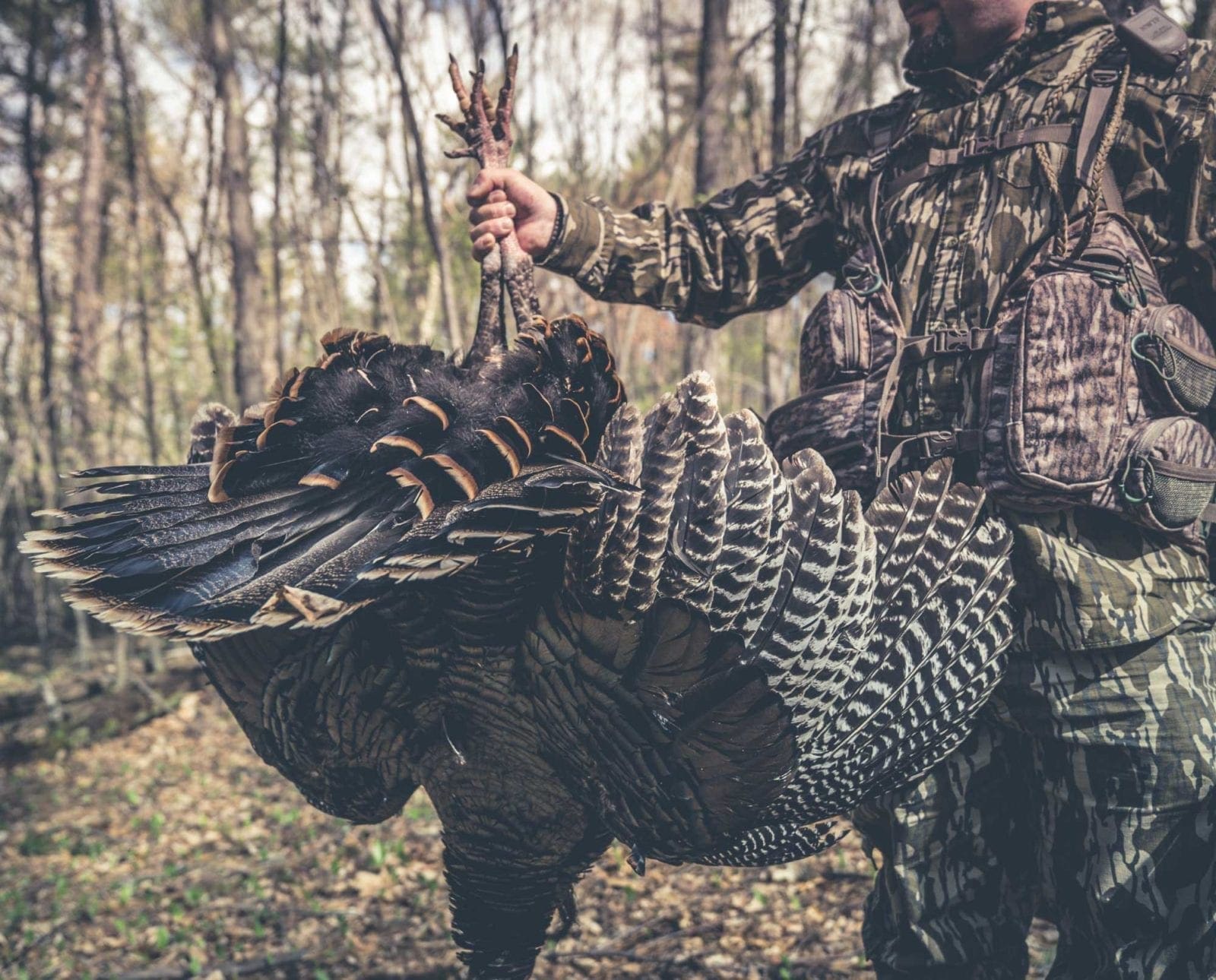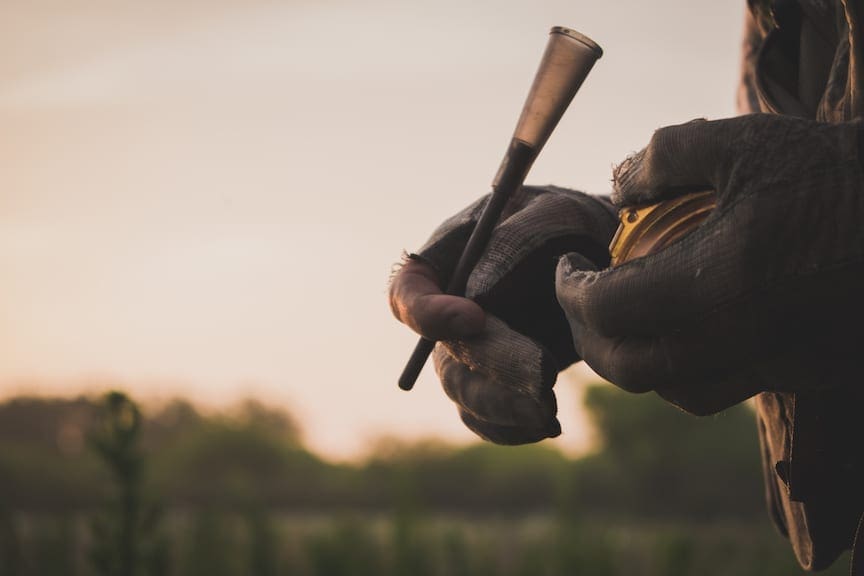Home » Turkey Hunting » How Fall Turkeys Can Improve Your Calling Skills
How Fall Turkeys Can Improve Your Calling Skills

Fred Bird is a 20 year turkey hunter and passionate…
How to call in a fall turkey and learn from their language
In my middle and high school years I spent a good amount of time studying the Cyrillic alphabet and learning to read, write, and speak the Russian language. Over the decades I’ve maintained the skills to read, write, and speak, but I’ve lost the ability to truly translate. On this basis alone I cannot honestly claim to be bilingual; however, after spending much of my adult life in the fall woods observing and pursuing fall turkeys, I will amend my previous classification and declare myself bilingual, as these fall hours and days of study have taught me more about wild turkey-speak and day-to-day behavior than any sex-crazed spring gobbler has.
Fall turkeys have a calling language all their own
If one is to truly become a master turkey caller, you should—no, you must— spend time around Fall turkey flocks to hone your craft. Admittedly, I am an average deer hunter at best; I typically fill my freezer with whatever walks past my stand. It is these whitetail pursuits, however, that put me squarely in the midst of fall flocks of turkey that are in the process of growing to large wintering flocks and provide me the most intimate opportunities to observe and learn.
Sitting in my riparian deer stand during the New Hampshire muzzle loader season of early November offers a front row seat to the spectacle that is a fall turkey flock fly-down. It’s characterized by the jockeying of first-season jakes and “super jakes” and the crabby boss hens establishing the hierarchy and mustering their young. All the while, three- to four-year-old gobblers establish their own Fight Club in a distant corner of the terrain, wing beating and chest bumping until they finally settle and feed their way to the rest of the group. The fighting purrs, the kee-kee whistles, and the raspy tones of a mouthy hen running off inferior birds is the stuff Grand National callers dream of and attempt to imitate.
There is no better teacher and way to learn how to “talk turkey” than observing a fall flock. Sure, we call in the spring, but it is largely a one-sided affair. We sit, we hen call, the gobbler fires off, on a good day he comes unglued. . . but our turkey vocabulary is limited. It should also be noted that much of our spring calling is, in fact, counterintuitive to the biology of the wild turkey. Gobblers have a strut zone and park their feathery backsides in one spot for a reason; it’s written in their DNA coding. (Read: What Does it Mean When a Turkey ‘Hangs Up?’) How we’ve managed over these past decades to override hundreds of years of females going to the males of the species is quite possible the 8th Wonder of the World, but it works and I digress. To become fluent, to become bilingual in wild turkey, fall turkey hunting is required.

Fall turkey hunting tactics
Considering the limited calling and our limited spring tactics, fall provides a completely different set of rules, both from the managing state agency and from the turkeys themselves. Taking into account all that has been discussed to this point, it is simply wide open to the would-be fall turkey hunter’s personal appetite and their goals. As a spring “run and gun” guy, the fall tactic of scattering the flock certainly appeals to my sensibilities and is entertaining to be a part of! If you’re not familiar with this abrupt and noisy tactic, it basically goes like this:
- Find flock.
- Get within running distance.
- CHARGE! If you’re blessed to have a trained four-legged companion, they can be the flock buster (subject to local regulations).
Now, I’ve heard of folks firing shots to bust up a flock. I do not recommend this practice simply for safety reasons and for economical reasons. So, save your turkey loads for the moment they were intended for—don’t shoot towards the flock or in an indiscriminate direction to make loud noises. Clap or yell if you must. And be considerate of the archery hunter who is sitting quietly and may be nearby, because you are surely going to blow that area up!
With the flock scattered, set up in the direction where you observed the most birds fly or run. Sit and call with your most desperate kee-kee; a lone hen decoy may help here with confidence building for those smaller, roaster-sized turkeys. They may need a little coaxing after what you just did. Aside from the random bobcat or coyote, not much is running straight at these birds; it’s a lot for their pea-sized brains to process and endure.
If chaos and cornerback-like violence of action isn’t your bag, you can always set up based on your observation of their daily habits and passively sit and wait them out. Having watched fall flocks for years, I have found them to be consistent in their daily routines. Learn those routines and just wait; you likely have the entirety of the daylight hours to do so. The same tactics can be employed on an active dusting site and for an evening roost hunt. Eventually, they’ll show up for a dust bath or to their established roost trees—just be there when they do.
In the end, all of turkey hunting is good. With all of the amazing opportunity the fall provides, no one should be looking at fall turkey hunting as a secondary consideration. It is a purposeful endeavor not to be missed, both for the hunting as well as the learning opportunities.
Fred Bird is a 20 year turkey hunter and passionate conservationist. Having worked for organizations such as the NWTF and USA, Bird’s heart and soul lies in the turkey woods. Residing in NH with his family, this USAF veteran continues to serve the public as one of NH’s Fish and Game commissioners.




